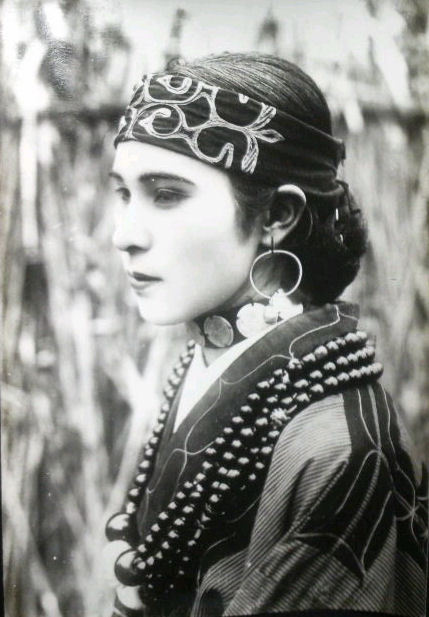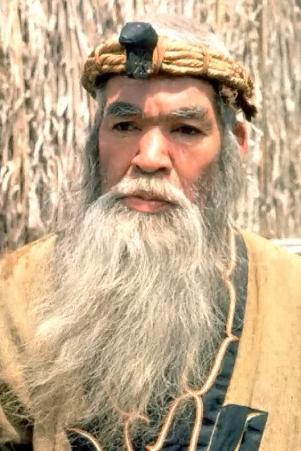kalu_miah
SENIOR MEMBER

- Joined
- Jan 4, 2009
- Messages
- 6,475
- Reaction score
- 17
- Country
- Location
On the issue of temple destruction by Aurangzeb, described by well known history scholar Richard Eaton:
http://ftp.columbia.edu/itc/mealac/pritchett/00islamlinks/txt_eaton_temples1.pdf
http://ftp.columbia.edu/itc/mealac/pritchett/00islamlinks/txt_eaton_temples2.pdf
‘It’s a myth that Muslim rulers destroyed thousands of temples’ | Tehelka.com
"You also examined at length the destruction of temples in this period. What did you find?
The temple discourse is huge in India and this is something that needs to be historicised. We need to look at the contemporary evidence. What do the inscriptions and contemporary chronicles say? What was so striking to me when I went into that project after the destruction of the Babri Masjid was that nobody had actually looked at the contemporary evidence. People were just saying all sorts of things about thousands of temples being destroyed by medieval Muslim kings. I looked at inscriptions, chronicles and foreign observers’ accounts from the 12th century up to the 18th century across South Asia to see what was destroyed and why. The big temples that were politically irrelevant were never harmed. Those that were politically relevant — patronised by an enemy king or a formerly loyal king who becomes a rebel — only those temples are wiped out. Because in the territory that is annexed to the State, all the property is considered to be under the protection of the State. The total number of temples that were destroyed across those six centuries was 80, not many thousands as is sometimes conjectured by various people. No one has contested that and I wrote that article 10 years ago."
Hindutva nationalists cannot stomach facts and calling Eaton a liar because of what he said above:
Hindu temple destructions a myth: Richard Eaton - India FactsIndia Facts
Richard Eaton's negation of Islamic Fanaticism
Niccolao Manucci - Wikipedia, the free encyclopedia
Manucci (1639–1717) a 17th century Italian with all his contemporary biases cannot be a neutral source. Storia do Mogor has many inconsistencies:
"Controversy
Manucci spent almost his entire life in India. He would then send home the manuscript for "Storia do Mogor" which was lent to the French historian François Catrou in 1707. Catrou wrote another version as Histoire générale de l’empire du Mogul in 1715. The original then emerged in Berlin in 1915 and was written in three different languages. This version was translated and then published. Among those who have doubted Manucci's authenticity are the famous British historian Stanley Lane-Poole and Ali Sadiq.
There are some popular events that are so misinterpreted that it is very hard to believe in the veracity of this authors work especially his work "Storia do Mogor". Some major examples are: 1) On page 120 on this book, Manucci writes that Akbar (3rd mughal ruler) was born in Persia. It is a very well known fact that has been confirmed by many independent authors that Akbar was born in Sindh (in modern day Pakistan) and not Persia.
2) On page 122 Manucci writes about the confrontation between Chand Bibi (regent of Bijapur) and Akbar. It is mentioned by Manucci that Akbar forces defeated Chand Bibi's forces and Akbar fell in love with her and moved her to his own palace. This event is again wrongly portrayed by Manucci, Akbar forces were able to defeat Chand Bibi's forces (they lost once) but Chand Bibi was in fact killed by her own troops and never by Akbar (almost all historians agree on this).
3) Again on page 123 comes a completely flawed story about Akbar. Manucci mentioned that Akbar forces attacked Chittor fort and by deceit Akbar took 'Jaimal' a prisoner and asked his wife 'Rani Padmini' to marry Akbar and join his harem or else he will kill Jaimal. Then Manucci expounds in great detail about how Rani Padmini played a trick on Akbar and assured the release of her husband Jaimal (Jai Mall) from Akbars fort. While this event is true but it completely out of time. This event happened in early 1300 AD, almost 250 years before Akbar was born or 350 years before Manucci was born. It was Alauddin khilji, sultan (king) of Delhi at that time who attacked chittor and not Akbar. Rana Rattan Singh was husband of Padmini while Manucci writes Padmini's husband as Jaimal, Jaimal was commander of Chittor forces in 1567 battle. This incident is widely recorded in Indian history through many paintings and writings and there is not even an iota of doubt that Manucci's work here is not representing history correctly.
There are numerous other incidents in this book which are completely flawed, this raises very big concerns about the veracity of Manucci's work, especially his writings about initial Mughal rulers Humayun, Babar and Akbar."
http://ftp.columbia.edu/itc/mealac/pritchett/00islamlinks/txt_eaton_temples1.pdf
http://ftp.columbia.edu/itc/mealac/pritchett/00islamlinks/txt_eaton_temples2.pdf
‘It’s a myth that Muslim rulers destroyed thousands of temples’ | Tehelka.com
"You also examined at length the destruction of temples in this period. What did you find?
The temple discourse is huge in India and this is something that needs to be historicised. We need to look at the contemporary evidence. What do the inscriptions and contemporary chronicles say? What was so striking to me when I went into that project after the destruction of the Babri Masjid was that nobody had actually looked at the contemporary evidence. People were just saying all sorts of things about thousands of temples being destroyed by medieval Muslim kings. I looked at inscriptions, chronicles and foreign observers’ accounts from the 12th century up to the 18th century across South Asia to see what was destroyed and why. The big temples that were politically irrelevant were never harmed. Those that were politically relevant — patronised by an enemy king or a formerly loyal king who becomes a rebel — only those temples are wiped out. Because in the territory that is annexed to the State, all the property is considered to be under the protection of the State. The total number of temples that were destroyed across those six centuries was 80, not many thousands as is sometimes conjectured by various people. No one has contested that and I wrote that article 10 years ago."
Hindutva nationalists cannot stomach facts and calling Eaton a liar because of what he said above:
Hindu temple destructions a myth: Richard Eaton - India FactsIndia Facts
Richard Eaton's negation of Islamic Fanaticism
Niccolao Manucci - Wikipedia, the free encyclopedia
Manucci (1639–1717) a 17th century Italian with all his contemporary biases cannot be a neutral source. Storia do Mogor has many inconsistencies:
"Controversy
Manucci spent almost his entire life in India. He would then send home the manuscript for "Storia do Mogor" which was lent to the French historian François Catrou in 1707. Catrou wrote another version as Histoire générale de l’empire du Mogul in 1715. The original then emerged in Berlin in 1915 and was written in three different languages. This version was translated and then published. Among those who have doubted Manucci's authenticity are the famous British historian Stanley Lane-Poole and Ali Sadiq.
There are some popular events that are so misinterpreted that it is very hard to believe in the veracity of this authors work especially his work "Storia do Mogor". Some major examples are: 1) On page 120 on this book, Manucci writes that Akbar (3rd mughal ruler) was born in Persia. It is a very well known fact that has been confirmed by many independent authors that Akbar was born in Sindh (in modern day Pakistan) and not Persia.
2) On page 122 Manucci writes about the confrontation between Chand Bibi (regent of Bijapur) and Akbar. It is mentioned by Manucci that Akbar forces defeated Chand Bibi's forces and Akbar fell in love with her and moved her to his own palace. This event is again wrongly portrayed by Manucci, Akbar forces were able to defeat Chand Bibi's forces (they lost once) but Chand Bibi was in fact killed by her own troops and never by Akbar (almost all historians agree on this).
3) Again on page 123 comes a completely flawed story about Akbar. Manucci mentioned that Akbar forces attacked Chittor fort and by deceit Akbar took 'Jaimal' a prisoner and asked his wife 'Rani Padmini' to marry Akbar and join his harem or else he will kill Jaimal. Then Manucci expounds in great detail about how Rani Padmini played a trick on Akbar and assured the release of her husband Jaimal (Jai Mall) from Akbars fort. While this event is true but it completely out of time. This event happened in early 1300 AD, almost 250 years before Akbar was born or 350 years before Manucci was born. It was Alauddin khilji, sultan (king) of Delhi at that time who attacked chittor and not Akbar. Rana Rattan Singh was husband of Padmini while Manucci writes Padmini's husband as Jaimal, Jaimal was commander of Chittor forces in 1567 battle. This incident is widely recorded in Indian history through many paintings and writings and there is not even an iota of doubt that Manucci's work here is not representing history correctly.
There are numerous other incidents in this book which are completely flawed, this raises very big concerns about the veracity of Manucci's work, especially his writings about initial Mughal rulers Humayun, Babar and Akbar."
Last edited:


















